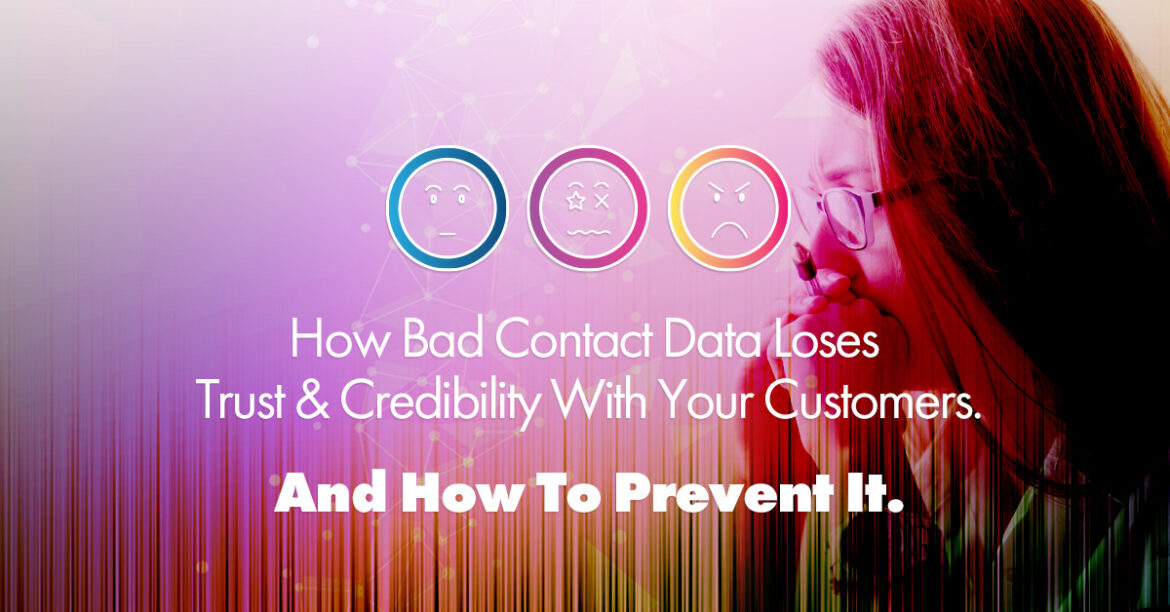GIGO (garbage in, garbage out) is a familiar saying common to the early days of modern computing. The adage implies that the output of a program is only as good as the input supplied by the user. The old saying “garbage in, garbage out” George Fuechsel, an early IBM programmer and instructor, is generally given credit for coining the term. Data, for most organizations, is often collected for record-keeping purposes, examinations and performance reviews. These records are then kept for future reference in order to make better business decisions that will impact success, improve its practices and increase revenue.
Why Data Quality Is So Important
For many companies, managing the quality data can seem like an overwhelming task. Data quality affects every aspect of your business, from sales and development to marketing and customer care. Data quality at the point of entry should be a top priority for all organizations. Unfortunately, no software or app is immune to human error. Historically bad data represents common and expensive problems that hinders not only marketing programs but customer perceptions and grinds the whole sales process to a halt.
What Is Bad Data?
It depends on the data and how it enters your system. Data is only useful if it’s high-quality. Bad data is at best not worth bothering about. At worst It can lead companies to make costly mistakes. There are many kinds of data an organization may choose to collect, but here we will focus on one of the most critical – contact data. This includes a contact’s name, address, phone number and email, all of which are crucial to marketing, sales, fulfillment, and service.
So, how does a bad contact record make it into your database?
So, here are a couple of ways that make a contact record bad: Contacts typos caused by speed filling out an inquiry form on a mobile device, ordering a product, rushing through a purchase, or providing wrong information are usually the first to commit a data quality error. Migrating data from one platform to another without proper mapping, contact data decay as contacts move, get new phone numbers, and change positions. Let’s not forget your sales and customer service team can compound the problem by manually updating data that looks incorrect and making mistakes in the process.
What Is the Cost of Bad Data?
Those costs come from employees spending the time fixing bad data and errors that cause mistakes with customers. When people take it upon themselves to “fix things” without fully understanding why the information is incorrect to begin with. Finally, poor quality data severely limits your ability to take full advantage of today’s business tools like marketing, sales automation platforms, and CRM.
Missed Sales Opportunities
Inaccurate, plain old bad data, such as duplicative, erroneous data can lead to lost revenue in many ways. Much like decaying garbage, bad data only gets worse over time. Wasting all your effort and time with product or service follow-up communications that fail to convert intended contact because the customer contact data is inaccurate. If your competitors or new entrants into the market with a more mature understanding of data are obtaining more business intelligence than you are, they will have insights you don’t. That might mean a company misses a critical opportunity for new business development. Even worse is the chance to talk with prospects, who may be ideal sales opportunities.
Poor Customer Experiences
Much like sales departments inaccurate, plain old bad data, minimizes revenue. But customer support teams lose more than just time and money first in dealing with fed up customers. Additional time is spent getting to the root cause of problems and sorting out bad information mostly based on inaccurate data, names and locations, leading to major inefficiencies, frustration and creates a bad customer experience. Plus reputations can be lost. Reputational damage occurs when upset customers take to social media to express their outrage. As a result, even your most loyal customers will feel estranged and burned out.
How Do You Manage Bad Data Across Your Business?
No industry is resistant to bad data. Think our military, pharma or healthcare is naturally immune? There’s no such thing. In marketing, bad data makes it tough to build interest, engagement and trusted relationships with potential customers. First, begin by shoring up business processes around gathering and data management can help. Take a deep drive in your system of governance and controls in place. Look at the data you expose to prospects and customers, regulators, and others outside the business, but if a contact record was poor to begin with that likely won’t matter – you already know what happens to garbage when it ages.



